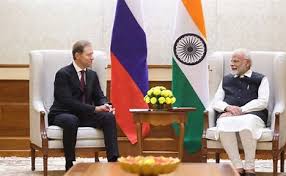With summer right here, power crunch can’t be far behind. But there is the flip side to these scorching sunny days in India. For a country that receives so much sunlight through the year, it could easily become a hub of solar energy generation. Even other renewables like wind and water could be harnessed to the maximum. This was exactly what Prime Minister Manmohan Singh conveyed at a global energy conference in the Indian capital recently.
The conference was attended by officials of 20 countries from around the world. He urged global companies to make India a solar energy hub and stressed on relying more on renewable energy sources for power generation. It will not only plug the massive energy demand-supply gap, but will also help cut down greenhouse gas emissions and put the country on the path of sustainable development.
India’s geographical location has given it the unique advantage of 300 sunny days in a year – a huge potential to generate abundant solar energy to light up countless homes, specially in rural India that continue to reel in darkness. The Jawaharlal Nehru National Solar Mission launched in 2010 aims to deploy 20,000 MW of grid connected solar power by 2022, equivalent to one-eighth of the nation’s current installed power base.
With nearly 400 million people without access to power, mostly in rural areas, India desperately needs new sources of energy. Even urban areas are groaning under chronic power shortage. Thus, the focus on solar energy to fill this acute gap between demand and supply is attracting numerous companies – Indian and global – to grab a slice of the emerging solar power sector.
Moser Baer, a leading optical storage manufacturer, is in talks with the Andhra Pradesh government to acquire 100 acres of land. It also plans to build a Rs 330 crore (around $60 million) silicon PV manufacturing facility (near Delhi) and has tied up with Applied Materials Inc for technology transfer. In 2005, the company was among the first to set up a wholly-owned subsidiary – Moser Baer Photo Voltaic Limited – to focus on the high-growth solar energy segment.
The US-based Signet Solar, which manufactures photovoltaic modules and has plants in India and Germany, has drawn up an ambitious $2 billion investment plan to set up three photovoltaic production facilities in the country. It is also looking at an R&D base here. The company is already in talks with the Andhra Pradesh government to set up two manufacturing facilities there. Solar Semiconductor, another photovoltaic manufacturing company, has lined up an initial $40 million investment plan to set up two production units.
Solar power can transform lives, especially in rural areas which don’t have any electricity connections. “You have a sewing machine which can be powered by electricity but unfortunately in most of these areas where there is no electricity, the entrepreneur is forced to use manually operated machines. When we power it on solar, instead of producing 10 or 20 saris, the person produces about 80 or 100 saris,” Prasant Biswal, senior manager, Mission, Solar Electric Light Company (SELCO), told a news network.
Being the signatory of the Kyoto protocol, India cannot entirely rely on thermal power because it has a devastating impact on environment. In such a scenario, India has to rely on renewable energy sources. Wind and solar energy are the best lucrative option that India can exploit. Already, some companies are doing their best.
Suzlon Energy, India’s largest wind power turbine supplier, recently bagged two major contracts to set up wind energy farms. The company signed a contract to supply wind turbines of 21.75 MW with Sri Kumarswamy Mineral Exports Pvt Ltd (SKMEPL) on January 28, 2013. The wind farms have been set up in Dindigul and Tirunelveli district of Tamil Nadu in March. A spokesperson from SKMEPL has said that work on the project is underway and power generation is expected to commence this month. Since November 2012, Suzlon has bagged four domestic contracts with a total wind energy capacity of 112.05 MW. The company is the top wind energy producing company in India with around 7,500 MW installed capacity across eight states.
According to the report by the Central Electricity Authority (CEA), fuel shortage and delayed monsoon in southern India led to peak power shortage of 12,295 MW in the country during December last year.
Author Profile
Latest entries
 CultureJune 29, 2013Brave New Tech World: Enabling the Differently-abled
CultureJune 29, 2013Brave New Tech World: Enabling the Differently-abled CultureJune 20, 2013Every child in school by 2015: India gets UNESCO praise
CultureJune 20, 2013Every child in school by 2015: India gets UNESCO praise Daily FixApril 27, 2013Deadline 2014: Can Facebook, twitter swing India’s poll roulette?
Daily FixApril 27, 2013Deadline 2014: Can Facebook, twitter swing India’s poll roulette? Business with IndiaApril 22, 2013Sunny Days: Making India a solar power hub
Business with IndiaApril 22, 2013Sunny Days: Making India a solar power hub







